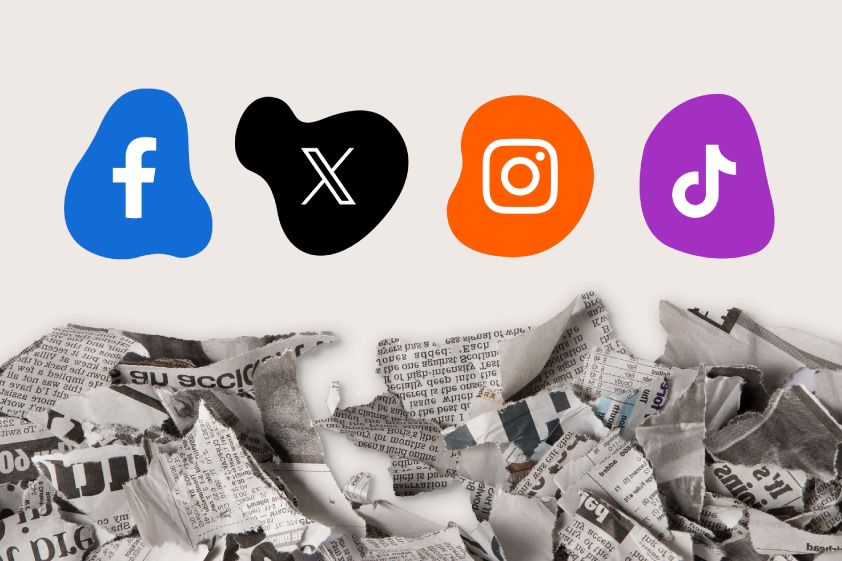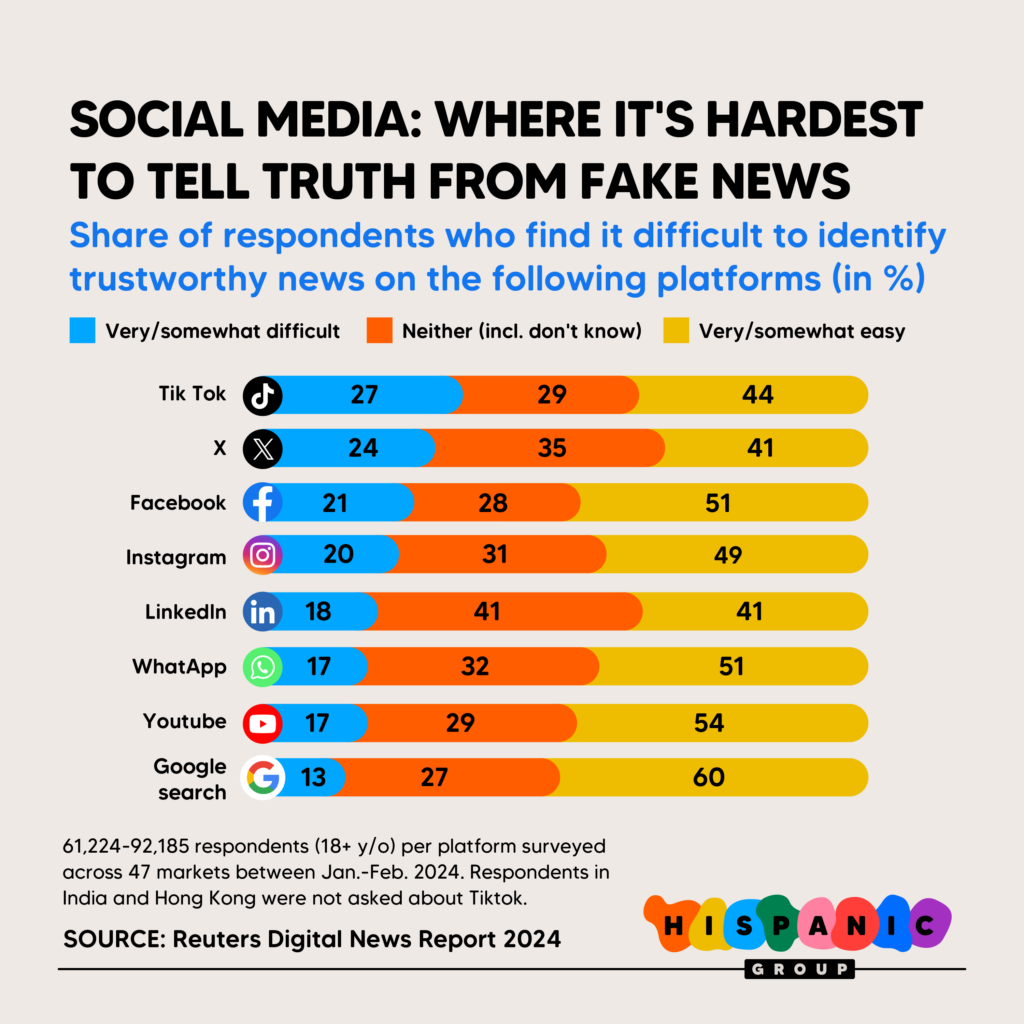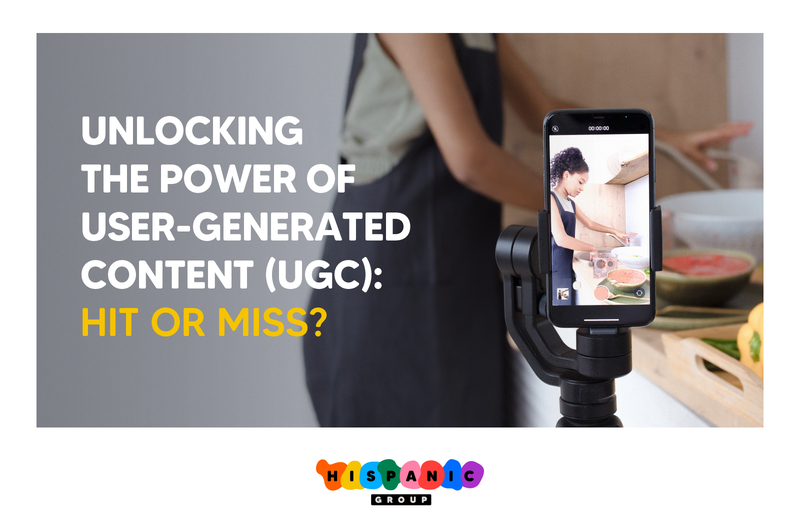

As we dive deeper into 2025, influencer marketing is shaping up to be more innovative than ever. This year, the focus is on building trust, embracing authenticity, and creating impactful connections. The following five trends are leading the charge.
As the holiday rush approaches, marketers worldwide prepare for what is often the most intense, rewarding, and challenging season of the year. Here’s a detailed look at how industry professionals gear up to prioritize, plan, and execute strategies that capture audience attention and drive results.


 In today’s digital age, social media platforms are more than just spaces for connecting with friends or sharing selfies—they are integral parts of the American news diet. According to a comprehensive Pew Research Center survey conducted in May 2024, half of U.S. adults get news at least sometimes from social media. This statistic underscores the pivotal role platforms like TikTok, X (formerly Twitter), Facebook, and Instagram play in news consumption. However, the ways Americans encounter news on these platforms differ significantly.
In today’s digital age, social media platforms are more than just spaces for connecting with friends or sharing selfies—they are integral parts of the American news diet. According to a comprehensive Pew Research Center survey conducted in May 2024, half of U.S. adults get news at least sometimes from social media. This statistic underscores the pivotal role platforms like TikTok, X (formerly Twitter), Facebook, and Instagram play in news consumption. However, the ways Americans encounter news on these platforms differ significantly.
- Inaccurate News: Encountering inaccurate news is a common complaint among social media users. About 70% of X users and 65% of Facebook users report seeing false or misleading news stories.
- Platform Trust: Trust varies by platform, with 40% of Democrats expressing skepticism towards news on X, while 45% of Republicans show more skepticism towards news on Facebook.

The trend towards digital news consumption is undeniable. A significant 86% of Americans now get their news from smartphones, tablets, or computers, indicating a strong preference for digital sources over traditional media. Specifically, 58% of Americans choose news websites and apps as their main source, overshadowing TV (34%), radio (13%), and print newspapers (9%).
While social media platforms play a significant role in news dissemination, they are not the primary news source for most Americans. Instead, 40% of U.S. adults rely on news websites or apps, and 20% use search engines for their news needs. However, social media remains a powerful tool for engaging directly with audiences, with each platform catering to different consumption habits:
The survey underscores the integral role social media plays in the American news diet, with half of U.S. adults getting news from social media at least sometimes. Despite differences in platform structures, content, and culture, all four platforms serve as significant conduits for news, albeit in varied forms and from diverse sources. This diversity highlights the complexity of modern news consumption and the importance of understanding platform-specific behaviors and preferences.
In a world where headlines and likes intertwine, the ways in which we consume and perceive news are constantly changing. By staying informed about these trends, we can better appreciate the dynamic role social media plays in shaping our understanding of current events.
Sources: Pew Research Center, "How Americans Get News on TikTok, X, Facebook and Instagram" 2024
 Instagram aims to make the platform more transparent by explaining how content ranking works and addressing common misconceptions. This guide provides insights into the various algorithms and features Instagram uses to enhance the user experience and help creators understand how their content is surfaced.
Instagram aims to make the platform more transparent by explaining how content ranking works and addressing common misconceptions. This guide provides insights into the various algorithms and features Instagram uses to enhance the user experience and help creators understand how their content is surfaced.
As we venture into 2024, a transformative wave is sweeping across the spheres of marketing, media, and corporate leadership, with Latino influencers leading the charge. This shift is not just a passing trend but a significant movement that's reshaping the way brands, businesses, and cultural institutions engage with an increasingly diverse audience. The active inclusion of Latinos, spearheaded by remarkable Latinas, at prestigious global forums like The World Economic Forum, Critics Choice Awards, and Sundance Festival, underscores a broader cultural awakening.

As the digital world spins ever faster, social media marketers are tightening their seatbelts, preparing for what could be the most pivotal year in social media history. With the advent of groundbreaking technologies and evolving consumer expectations, 2024 is shaping up to be a year where only the savviest survive. Gone are the days of blindly chasing trends; the future belongs to those who prioritize ROI, authenticity, and strategic platform focus. 'In 2024, it's all about meaningful engagement, not just shouting into the void,' says a social media expert from Hootsuite, hinting at the seismic shifts we're about to witness.

In the dynamic realm of marketing, the question arises: Is User-Generated Content (UGC) a hit or miss for your brand? Fear not, as we delve into the intricacies of UGC, exploring its impact, types, success stories, and how to effectively integrate it into your marketing strategy.
Engage with the power of user-generated content (UGC) as we unveil a compelling narrative. Did you know that 90% of consumers prioritize UGC over other content when making purchasing decisions? Dive into the reasons behind the staggering 92% trust in recommendations from fellow users and the fact that 86% of savvy marketers are seamlessly weaving UGC into their campaigns.
The question isn't whether to embrace UGC but how to harness its potential for your brand's success.
Key UGC Statistics:
Clearly, UGC has evolved into a vital tool for 21st-century marketers. But what makes it so indispensable? Let's explore.
Unlocking the Power of UGC: 5 Compelling Reasons

Elevates Authenticity:
Authenticity, the true currency of trust, finds its purest form in the voice of the customer. While company representatives may be seen as biased, UGC brings forth genuine experiences and opinions, becoming a robust tool in constructing trust.
Acts As a Trust Signal:
Going beyond authenticity, UGC serves as a powerful trust signal. It presents real people using your products, providing potential customers with the reassurance that they are making a reliable choice. This is especially crucial for durable goods and items related to personal care, where trust is paramount.
Cost-Effective Brilliance:
In the world of scrutinized budgets, UGC shines as a cost-effective strategy. By leveraging content created by your customers, you not only save on content creation costs but also often only incur distribution expenses.
Drives Conversions:
The numbers speak volumes—a staggering 29% increase in web conversions when websites feature user-generated content. Whether it's product reviews on e-commerce sites or heartfelt testimonials, UGC undeniably influences conversion rates.
Unleashes Diverse and Creative Content:
Your customers, a diverse and creative bunch, bring a richness to your brand that internal teams might miss. UGC allows for a variety of content that resonates with different segments of your audience, creating a dynamic and engaging brand narrative
Unlocking the Magic of UGC: 5 Captivating Types to Embrace
To fully unleash the power of UGC, it's vital to explore the diverse types of content at your fingertips:
Product Reviews
Genuine reviews from real users offer valuable insights, acting as potent endorsements for your products.
Testimonials
Short, sweet, and exclusively positive, testimonials craft a feel-good narrative around your product.
Videos
User-created videos, often raw and authentic, vividly showcase your product in action, creating resonance on social media platforms.
Images
Visual content, particularly in industries like fashion or home décor, allows users to spotlight your products in real-life settings.
Hashtag Contests
Spark audience engagement with campaigns centered around specific hashtags. Encourage users to generate content, and reward them with recognition and prizes for their creativity.
Unveiling the Secrets of Success: Learning from UGC Triumphs
Brands that have masterfully wielded User-Generated Content (UGC)
Lululemon's #thesweatlife
By inviting customers to share snapshots in activewear, Lululemon ingeniously displayed their products in authentic, real-world scenarios.
Chipotle's #peopleofchipotle
Shining a spotlight on employees through UGC, Chipotle crafted a campaign that highlighted a positive workplace, magnetizing potential employees.
Glossier's Community-Driven Triumph
Born from a blog, Glossier, a makeup brand, flourishes by embracing user ideas. The brand's super-successful journey is rooted in listening to women and implementing their ideas, both on the blog, Into the Gloss, and across social media. Their user-generated content forms the heart of their brand identity.
User-Generated Content isn't just a marketing tool; it's a game-changer. Connecting with customers on a peer-to-peer level, UGC promises heightened brand awareness, increased sales, site visits, and more. By nurturing authenticity, trust, and creativity, UGC emerges as a dynamic force that not only shapes brand narratives but also fortifies the bonds within your community. This comprehensive guide serves as your gateway to understanding, implementing, and maximizing the potential of User-Generated Content.
As we enter the final month of the year, the landscape of U.S. demographics continues to undergo significant evolution. Multicultural segments now constitute 40% of the U.S. population, a figure expected to increase. This shift signals a crucial imperative for brands to adapt their marketing strategies to stay relevant and effective.

In these changing times, culturally relevant marketing has become increasingly important, especially among Hispanic, Black/African American, LGBTQIA+, and AAPI segments. Brands that embrace and celebrate the rich and diverse cultures of these groups are likely to foster deeper connections and loyalty. With over 140 million multicultural consumers in the U.S. alone, wielding a combined spending power of $3.2 trillion, it's evident that multicultural marketing isn't just a niche strategy—it's a critical pathway to engaging with mainstream consumers who value brands that resonate with their cultural identity.
To witness the power of such an inclusive approach in action, look no further than Target's multicultural campaign. They have taken meaningful strides in authentically connecting with diverse audiences, setting a noteworthy standard in the industry. Explore their campaign here to see how they have woven cultural appreciation into the fabric of their brand narrative, creating a resonant and impactful message for a broader audience.
A Call for Authentic Engagement
The future of marketing is undeniably multicultural. Brands looking to thrive in this evolving landscape must commit to understanding and genuinely engaging with diverse cultures. This approach is not only beneficial for short-term gains but is also essential for building long-term brand loyalty and relevance in an increasingly multicultural world.
Ensure Cultural Sensitivity:Acknowledge and respect cultural nuances that can resonate with diverse audiences. This includes researching different cultures to understand values, aesthetics, and narratives that connect with them, and ensuring cultural appropriateness in branding elements.
Embrace Cultural Nuances:Understand and respect the cultural nuances of the audience. This includes conducting thorough research on cultural values, beliefs, traditions, and language to ensure messaging is culturally sensitive and respectful.
Reflect Diverse Experiences: The campaign should genuinely reflect the diverse experiences and cultures of the audience. This involves using language and images that celebrate diversity and inclusion, as well as engaging authentically with communities.
Partner with Diverse Influencers:Collaborate with voices intimately connected to their respective communities, leading to genuine and meaningful customer engagement. They bring a unique personality and perspective that strongly resonates with diverse audiences.
Guiding brands through this multicultural future involves delving deep into cultural nuances, a commitment to authenticity, and a willingness to evolve alongside the dynamic consumer landscape. As marketers, embracing this diversity is not just a responsibility; it's a privilege that opens doors to a world of rich experiences and connections.
In today's fast-paced and interconnected world, the landscape of marketing is constantly evolving. Nowhere is this transformation more evident than in the US Hispanic market, a dynamic and diverse demographic that presents both challenges and opportunities for marketers. As Your Cultural Link to the Evolving US Hispanic Market, we understand the importance of staying at the forefront of innovation. In this extended blog post, we will dive even deeper into the exciting world of tech innovations in Hispanic marketing, exploring how cutting-edge technologies are reshaping the way we engage with the US Hispanic audience.

Before we delve into the world of tech innovations, let's take a moment to appreciate the vastness and diversity of the US Hispanic market. It encompasses a wide range of cultures, languages, and traditions, from Mexican-Americans in the Southwest to Puerto Ricans in the Northeast and Cuban-Americans in Florida. Understanding this diversity is key to effective marketing, and it's here that technology can play a pivotal role.
Artificial Intelligence (AI) has swiftly become a game-changer in the marketing realm. Its ability to process vast amounts of data and draw actionable insights has revolutionized the way we understand consumer behavior. For Hispanic marketing, AI opens doors to unparalleled personalization. By analyzing cultural preferences, language nuances, and consumption habits, AI helps tailor marketing campaigns that resonate deeply with the Hispanic audience.
For instance, AI-powered chatbots can engage with customers in their preferred language, enhancing the user experience and fostering a sense of connection. Moreover, AI-driven analytics can identify trends and cultural nuances in real-time, allowing marketers to adapt their strategies swiftly and effectively.

Virtual Reality (VR) is not just about immersive gaming experiences; it can also transport consumers to new dimensions of cultural engagement. In Hispanic marketing, this technology offers a unique opportunity to bridge the gap between cultural backgrounds and create immersive experiences that resonate on a personal level.
Imagine a VR tour that takes users on a journey through the vibrant streets of Mexico City during Dia de los Muertos, allowing them to experience the rich traditions and celebrations firsthand. Such immersive experiences can deepen cultural connections and leave a lasting impact on consumers.
The US Hispanic market is a tapestry of cultures, languages, and traditions. Navigating this diversity requires a data-driven approach that recognizes the uniqueness of each segment while also finding common ground. Personalized data-driven campaigns tap into the power of insights derived from consumer behavior, cultural preferences, and historical data to create messages that resonate authentically.
As we embrace the future, we do so while honoring tradition and culture. The tech innovations mentioned are not a departure from our roots but a celebration of the rich diversity that defines the Hispanic audience. As Your Cultural Link, we recognize that the success of tech-driven marketing strategies lies in their ability to seamlessly integrate with the cultural fabric of our community.
For example, incorporating traditional elements like music, art, and storytelling into augmented reality (AR) experiences can create a sense of nostalgia and familiarity for consumers while introducing them to new products or services. This blending of technology and tradition can be a powerful tool for marketers.
The future of Hispanic marketing is an exciting journey where innovation and culture intertwine to create unforgettable experiences. As marketers, it is our duty to break barriers, celebrate diversity, and reach new heights.
Are you ready to embark on this exciting journey of tech-driven Hispanic marketing?
The Back-to-School Advertising Frenzy
As the summer sun bids farewell and school corridors echo with excitement, the advertising world gears up for the exhilarating Back-to-School season. This period creates a surge in demand for school-related products, shaping the landscape of marketing campaigns. Brands step into the limelight, striving to capture consumers' attention, and gain market share. It's a time of fierce competition, innovative strategies, and emotional connections. Join us on a creative journey as we explore the impact of Back-to-School on the advertising world and uncover the secrets to success.
Fueling the Demand for School Essentials
As students prepare to embark on a new academic journey, the demand for school-related products skyrockets. From colorful backpacks to cutting-edge technology, advertisers seize this moment to showcase their offerings and cater to the diverse needs of students and parents alike. The Back-to-School season opens a treasure trove of creativity, where advertisers transform mundane products into must-haves, making every purchase feel like a step toward success.
Targeted Magic: Reaching Hearts and Minds
A successful back-to-school campaign hinges on its ability to resonate with the audience on a personal level. Advertisers craft tailored messages that touch the hearts and minds of their target demographics. By acknowledging the distinct needs of students, parents, and educators, brands create a profound connection, nurturing loyalty that extends far beyond the academic season.
Thriving Amidst the Competition
The Back-to-School season is a battleground of brands vying for attention. The competitive spirit reaches its peak, prompting advertisers to unleash unique promotions, discounts, and incentives. Striving to outshine their rivals, businesses seek innovative storytelling and captivating visuals to leave a lasting impression on consumers.
Channeling Change: The Evolution of Advertising Platforms
As advertising channels continue to evolve, embracing change becomes vital. Traditional media like television, radio, and print coexist with digital platforms, including social media, email marketing, and online advertisements. Advertisers leverage these diverse channels to ensure their messages reach their target audience effectively.
Influencers: Making Waves in the Digital World
In the digital age, influencers wield significant power. Brands partner with influential bloggers, vloggers, and social media personalities to connect with younger audiences heavily relying on digital content. This collaborative approach provides authenticity and amplifies back-to-school offerings, elevating brand visibility and credibility.
Embracing Innovation: Where Technology Meets Education
Technology's integration into education has revolutionized the back-to-school landscape. Advertisers highlight tech-related products such as laptops, tablets, educational apps, and online learning platforms to cater to the digital needs of modern students. This emphasis on innovation aligns brands with the changing educational environment.
Seizing the Moment: Promotions and Urgency
The Back-to-School season thrives on creating a sense of urgency. Advertisers run special promotions, limited-time offers, and exclusive bundles to incentivize purchases, prompting consumers to make decisions swiftly. The allure of time-sensitive deals encourages consumers to act promptly and seize the moment.
Emotional Connection: Envisioning Success
Back-to-School advertisements tap into emotions, emphasizing themes of excitement, new beginnings, academic success, and personal growth. By connecting with consumers on an emotional level, advertisers forge powerful relationships, cultivating a profound resonance with their audience.
Parent Power: Understanding the Key Decision Makers
Parents play a pivotal role in back-to-school purchases. Advertisers recognize this influence and tailor marketing strategies to resonate with parents. Emphasizing convenience, affordability, quality, and the well-being of their children, brands aim to gain the trust and loyalty of this crucial demographic.
Budgeting for Success: Capitalizing on the Season
The Back-to-School season presents a golden opportunity for businesses. Advertisers strategically allocate their budgets to make the most of this lucrative period, recognizing its potential to generate substantial sales and establish long-term customer relationships.
Social Media: The New Search Engine
The digital landscape is ever-changing, and social media is now a force to be reckoned with. Young internet users are turning to platforms like TikTok and Instagram for their search queries, prompting a paradigm shift in how advertisers connect with their audiences. Advertisers must embrace this shift, harnessing the potential of social media to make their brands discoverable, relevant, and engaging. A well-executed social media strategy unlocks the gateway to success.
Capturing the Back-to-School Magic
As the Back-to-School season unfolds, the advertising world embarks on a journey of creativity and innovation. Brands fuel the demand for school essentials, create emotional connections, and navigate through the competitive landscape. By embracing change, leveraging technology, and recognizing the significance of social media, advertisers carve a path to success. Let us empower your back-to-school campaigns, helping you thrive in this dynamic realm of advertising. Together, we can unlock the A+ potential of back-to-school advertising and pave the way for enduring connections with your audience.
Let Hispanic Group be your guiding star in the dazzling universe of back-to-school advertising. Together, let's embark on a journey of creativity, success, and growth!
In today's dynamic and interconnected business landscape, diversity and inclusivity have emerged as powerful catalysts for growth and innovation. Partnering with a minority-owned agency is not only a moral imperative but also a strategic move for companies aiming to tap into a plethora of unique perspectives, untapped markets, and unparalleled creativity. This blog post delves into the significance of collaborating with minority-owned agencies, highlighting the benefits they offer, shedding light on compliance obligations, and ultimately celebrating the transformative potential they bring to the table.

Cultivating Innovation and Creativity
Diversity breeds creativity, and minority-owned firms infuse fresh perspectives into the creative process. By incorporating unique cultural insights and experiences, they offer a fresh lens through which to develop branding, marketing, and communication strategies. Numerous studies have shown that diverse teams outperform homogeneous ones, generating ideas that are more comprehensive, impactful, and relevant to an increasingly diverse consumer base.
Expanding Market Reach
In an era of globalization, multicultural marketing is a key driver of business success. Minority-owned agencies possess an inherent understanding of diverse markets, allowing them to tailor campaigns that resonate with specific communities. By partnering with these agencies, companies can tap into the immense potential of multicultural markets, gaining a competitive edge and fostering long-term customer loyalty.
Meeting Corporate Compliance Requirements
Many large companies have established supplier diversity programs as part of their corporate social responsibility initiatives. These programs aim to promote diversity by allocating a percentage of their spending towards minority-owned businesses. By partnering with a minority-owned agency, companies not only fulfill these compliance obligations but also enhance their reputation as socially responsible organizations
Fostering Economic Empowerment
Supporting minority-owned agencies contributes to economic empowerment within marginalized communities. By creating opportunities for minority entrepreneurs, companies actively participate in building a more equitable society. The growth and success of these agencies can serve as inspiration and encourage other aspiring minority entrepreneurs to pursue their dreams, further promoting economic equality and social progress.

Hispanic Group, a prominent media agency, proudly exemplifies the success of a minority-owned agency. Founded with the goal of bridging the gap between businesses and the Hispanic market, Hispanic Group utilizes its profound cultural understanding and comprehensive market insights to achieve outstanding outcomes.
As a minority-owned agency, Hispanic Group brings unparalleled expertise in multicultural marketing, empowering companies to connect with the rapidly expanding Hispanic population. Through customized campaigns that deeply resonate with Hispanic consumers, they unlock new avenues for business growth and brand expansion. Their dedication to excellence, cultural sensitivity, and strategic partnerships has positioned them as trailblazers in the industry.
The importance of increasing the number of minority-owned agencies cannot be overstated. By fostering an environment that encourages diversity, businesses can tap into a vast pool of talent, ideas, and perspectives. Encouraging entrepreneurship within minority communities promotes economic growth, cultivates innovation, and dismantles systemic barriers.
Companies can actively contribute to this cause by embracing supplier diversity programs, actively seeking out minority-owned agencies, and fostering relationships built on trust and collaboration. By collectively championing inclusivity, we can foster an environment where the power of diversity truly thrives.
In a world that is becoming increasingly interconnected, embracing diversity is not just a moral obligation but a strategic imperative. Working with minority-owned agencies unleashes untapped potential, fuels innovation, expands market reach, and contributes to economic empowerment. Hispanic Group serves as a testament to the transformative power of these agencies, showcasing the immense value they bring to the table.
As we forge ahead, let us remember that by embracing minority-owned agencies, we foster a culture of inclusivity and equality, propelling us towards a future where diversity is celebrated, and success knows no bounds.
As the Hispanic population continues to grow, Hispanic entrepreneurs are becoming increasingly influential in the tech and media industries. They are leveraging their cultural identity to bring new and innovative ideas to each industry, while also providing a fresh perspective to traditional business practices. Their contributions are helping to drive innovation, create new media platforms and content, and foster more diverse and inclusive cultures in the workplace. In the future, entrepreneurs will be key to the continued success of the tech and media industries, helping to shape the future of technology and media. Their creativity and influence will be essential to creating a more vibrant and dynamic industry that embraces diversity and inclusion.

These entrepreneurs are creating new platforms, applications, and software that are changing the way people interact with technology and with each other. One such entrepreneur is Juan Diego Calle, the founder of .CO Internet, a domain name registry that has become a popular alternative to the traditional .com domain. Calle, who was born in Colombia and immigrated to the United States as a child, saw an opportunity to create a new top-level domain that would appeal to entrepreneurs and small business owners. Today, .CO is used by millions of businesses and individuals around the world.
Another example is Maria Martinez, the President of Salesforce's Customer Success Group. Martinez, who was born in Mexico, has helped lead the company's growth and expansion into new markets. She is also a strong advocate for diversity and inclusion in the tech industry and has been recognized as one of the most powerful Latinas in business by Fortune magazine.
In addition to technology, Hispanic entrepreneurs are making their mark in the world of media, including traditional outlets such as television and radio, as well as new and emerging platforms such as social media and online content. One of the most prominent examples of a Hispanic entrepreneur in media is Jorge Ramos, the anchor of Univision's nightly news program. Ramos, who was born in Mexico, has been a vocal advocate for the Hispanic community and has used his platform to bring attention to issues such as immigration and civil rights. He has also been recognized as one of the most influential Latinos in the United States.
Another example is Isabel Gonzalez Whitaker, the former Editor-in-Chief of HipLatina, an online platform that celebrates Latina culture and lifestyle. Gonzalez Whitaker, who is of Cuban and Mexican descent, has written extensively on issues related to culture, entertainment, and social justice. She has covered events such as the Academy Awards, the Grammys, and the Sundance Film Festival, and has interviewed many high-profile celebrities and public figures. In addition to her journalism work, Whitaker is also a speaker and media consultant, and has been recognized for her contributions to the media industry by organizations such as the National Association of Hispanic Journalists.

The contributions of these entrepreneurs are not only important for their respective industries, but also for society as a whole. As this community continues to grow and become more influential, the perspectives and ideas of these entrepreneurs will become even more important in shaping the future of technology and media. However, there are still challenges that Hispanic entrepreneurs face, including access to capital, mentorship, and resources.
According to a report by the Stanford Latino Entrepreneurship Initiative, Hispanic-owned businesses are less likely to receive funding than non-Hispanic businesses and are less likely to have access to mentors and support networks. To address these challenges, there are a number of initiatives and organizations that are working to support Hispanic entrepreneurs. For example, the Latino Startup Alliance is a non-profit organization that provides resources and support to Latin entrepreneurs, while the National Hispanic Media Coalition advocates for diversity and representation in media.
In conclusion, the role of Hispanic entrepreneurs in shaping the future of technology and media is crucial. As the community continues to grow and become more influential, the contributions of these entrepreneurs will only become more important in driving innovation and advancing their industries. However, to fully unlock the potential of Hispanic entrepreneurship, there is a need for greater support, resources, and opportunities. By addressing the challenges and barriers that the community faces, we can ensure that they are able to fully contribute to the future of technology and media, thus creating a more inclusive and equitable society for all.
Sources:

Are you ready to elevate your strategy?
LET’S CONNECT